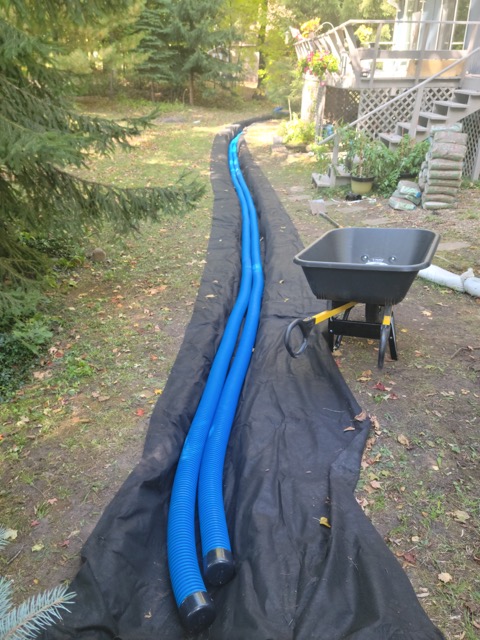There are two main pathways by which water can enter and damage your home – via groundwater, and via surface water.
Groundwater is the more severe of the two but it is easier to diagnose. Typically if there is a lake, pond, or stream by your house that is an indicator of a potential ground water issue. Any of those 3 features can suggest that there is a high water table in your area. When it rains, that water table gets raised over the next few days as it percolates through the soil. When the water table gets high enough it will eventually be above the level of your foundation or floor and saturate your concrete which causes it to be damp or discolored. The pressure it creates when the water table is pushing against your floor is called hydrostatic pressure. This hydrostatic pressure is what pushes the water through the cold joint of your floor (cold joint is where the floor meets the wall) which is the weakest part of the floor. In most homes, the walls and the floor were constructed separately, which isn’t an issue unless you have groundwater. Water can seep through any floor cracks as well. When the water table gets high enough or there is a heavy enough rain, there will be water sitting outside your foundation constantly. The water sitting outside your foundation can cause serious damage in a short period, or over a time period of 10-20 years. What you’re going to want to do is make sure you have weep holes when a system is installed to allow that water to pass through without causing damage. Typically a sump pump and a perimeter system is what’s needed to solve a ground water penetration issue.
Surface water is the other main reason someone gets water in their basement. Some contributors to surface water issues are gutters discharging too close to the foundation of the home, pooling water around the foundation, or the grade around your home is pitched towards your house. Solving a surface water issue CAN be the same way you solve a ground water issue but it can also be completely different depending on a variety of factors. Interior systems can be invasive and expensive, so if you can solve issues from the outside whenever possible. You can add gutter extensions so that your gutters discharge further away for your home. If you have pooling water you can add a yard drain or french drain to move the water away. Unlike groundwater there are multiple ways to solve an issue caused by surface water.
The trench needs to be at least 12-18 inches wide. This allows for the system to hold more water, and so the pump is used less. The wider trench takes a lot more work but makes your system exponentially more effective. If the trench is too small you can run into issues with a severe storm overwhelming your system.
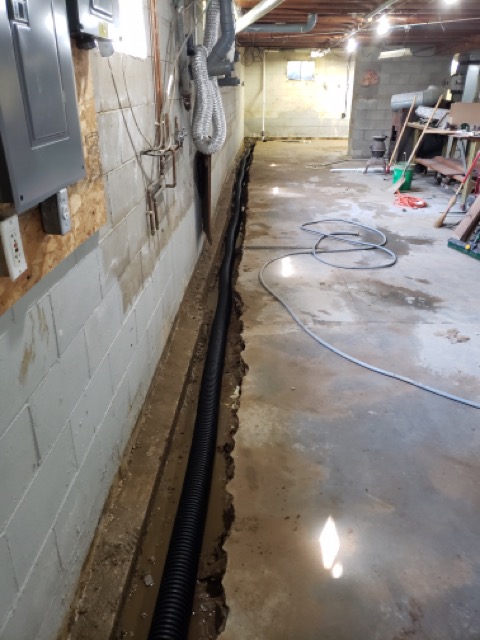

Corrugated pipe has stood the test of time, and is still the most popular and most effective way to move water. Coincidentally, it is also the cheapest for the homeowner and business. I have no idea why other companies use other less effective products just to market themselves differently. To me, this does not favor any homeowner using a less effective product. Corrugated pipe is harder to install than other products because it is bigger. In turn, it being harder to install also makes it a more effective system. To be installed correctly, the pipe is going to need to be pitched to a sump basin so the water that enters the pipe can move efficiently from one side of your basement to the other. Our corrugated pipe is perforated 360 degrees so water can come into the pipe at any angle.
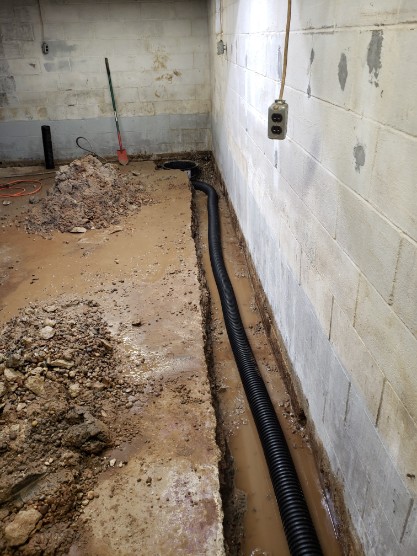
Engineering tabs are pieces of the floor left in place to maintain the integrity of the foundation while the work is being done. These are vital to maintain the health of the foundation. The last thing you want to do is take the entire perimeter of the floor out. The floor’s job is to hold your walls in place so they do not cave inward. I do not see other companies doing this practice and it worries me. Your foundation was built the way it was for a reason and you do not want to disturb that.
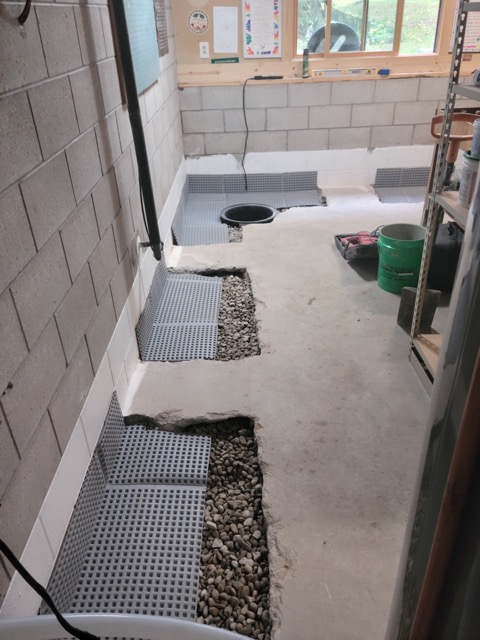

If you have a multiple pump system you’re going to need two separate discharges. This allows both pumps to work independently, and not get into each other’s way during a storm.
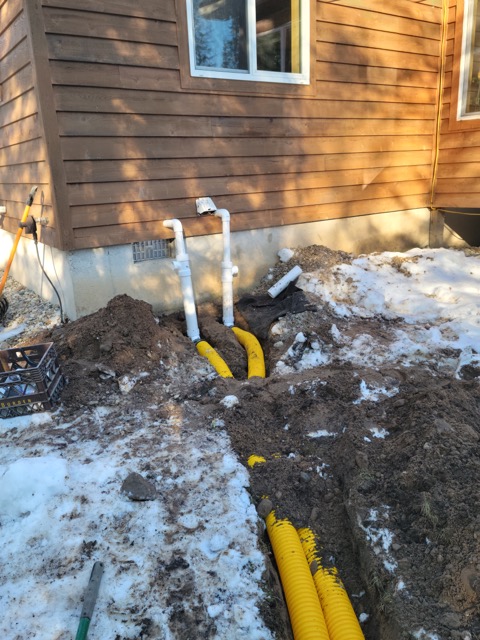
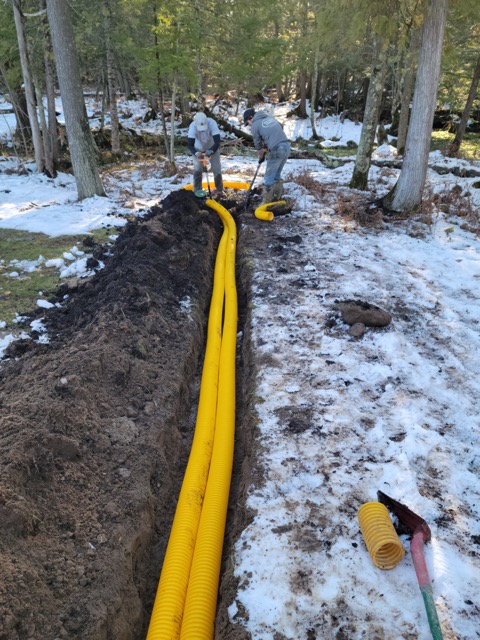
When you have your discharge installed you’re not going to want grass to grow over it and stop the water from escaping. The turf restrictor plate allows for a maintenance free way to solve this issue. It comes with every discharge.
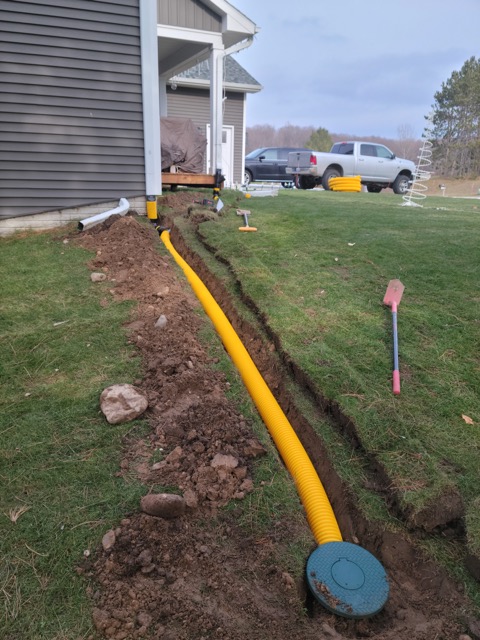
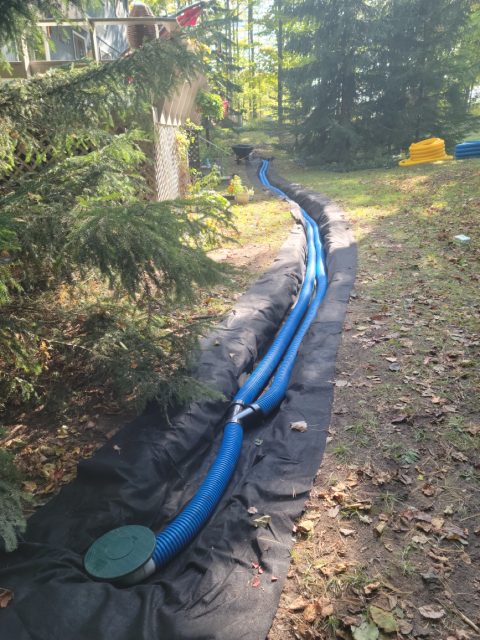
If the trench is not dug to the bottom of the footer, then your system will hold significantly less water. You want to control the water level below your floor. That is what causes your floor to be wet – it means the water level is in line with your floor. If your trench is not dug deep enough you can still get water on your floor even if you have a system in place.

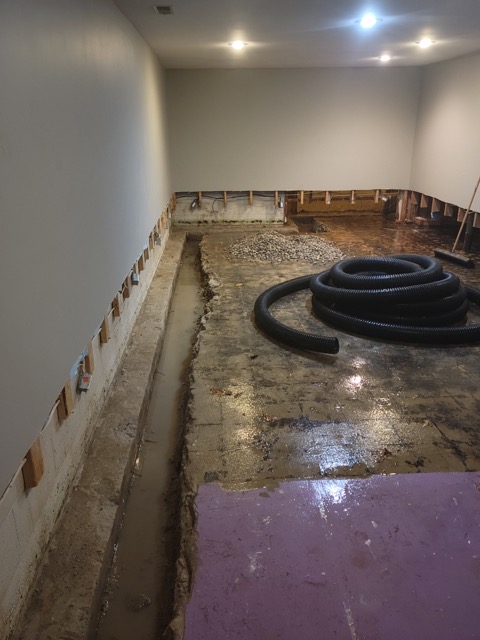
Poly drain is a waffle board that allows the water that builds up in your walls to enter the trench efficiently and effectively. This board also allows the concrete that was removed to be replaced to its original thickness. The “waffle” part of the board allows the replaced concrete to keep pressure on the wall once it’s cured.
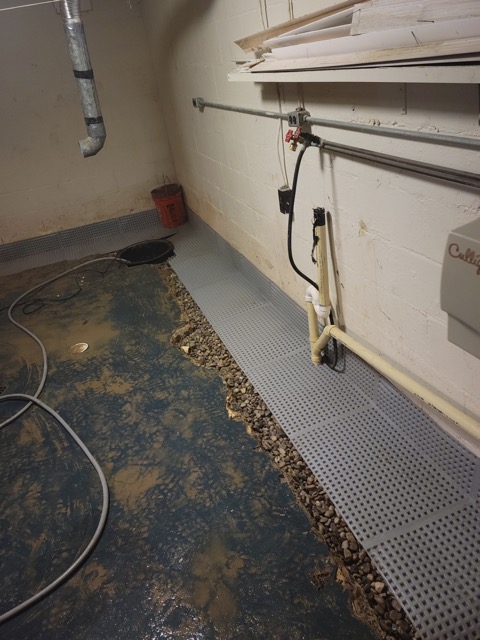
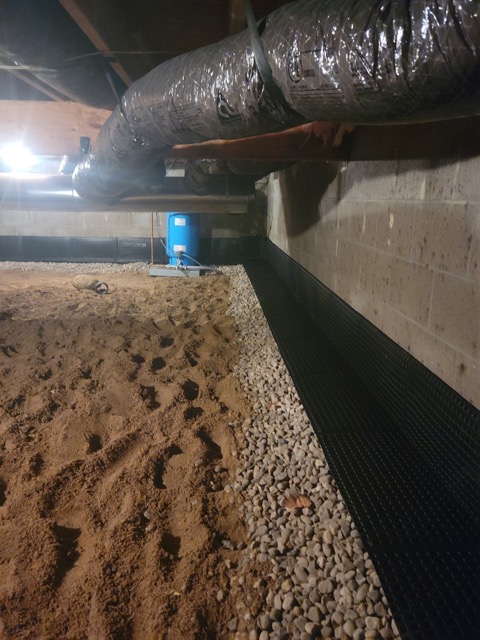
A clean finish is important in case the homeowner wants to put flooring back onto the concrete. Also important for aesthetics.
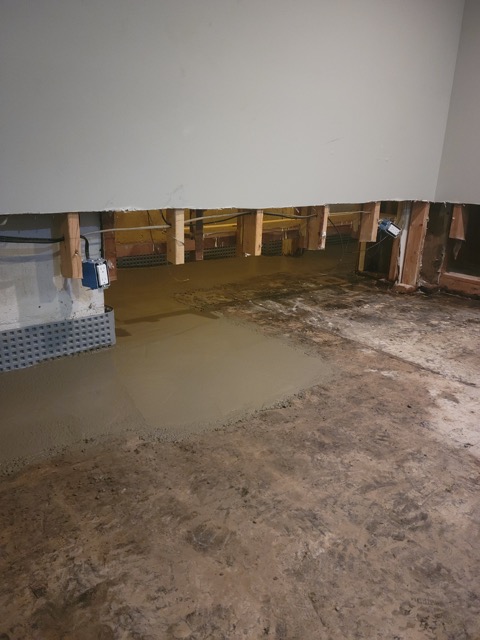
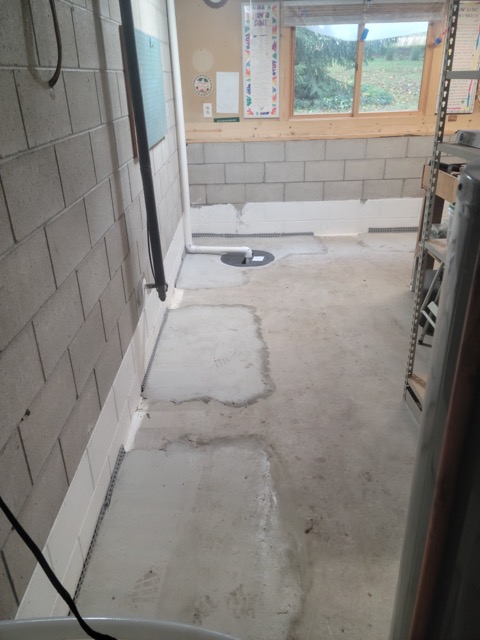
Round rock is used to fill the trench after all of the soil is removed. The purpose of round rock is to create “void” or air so that the water that makes it into the basement can easily make it into the pipe. You also use round rock surrounding the basin and pump. This allows any ground water coming from under your foundation to make it into the basin.


Weep holes are holes that are drilled in masonry blocks. If you have this type of foundation you will need a hole drilled in every cell and mortar joint along your system. Masonry blocks are strong but they are porous and act like water sponges. If you have water sitting outside of your foundation it will eventually soak into your blocks and actually fill up in your wall. This is what causes your walls to be damp and discolored. Water inside those blocks cause major issues with your foundation over time, actually breaking the “glue” essentially that holds the blocks together. Eventually you will see a white film on the surface of the blocks affected which is not a good sign. You can stop this process however by drilling holes into these blocks and allowing the water to pass through unrestricted. Damage is only done when water sits for a long period of time.
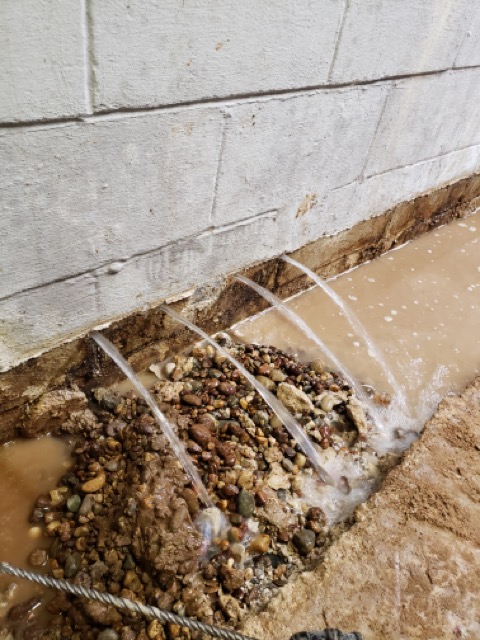
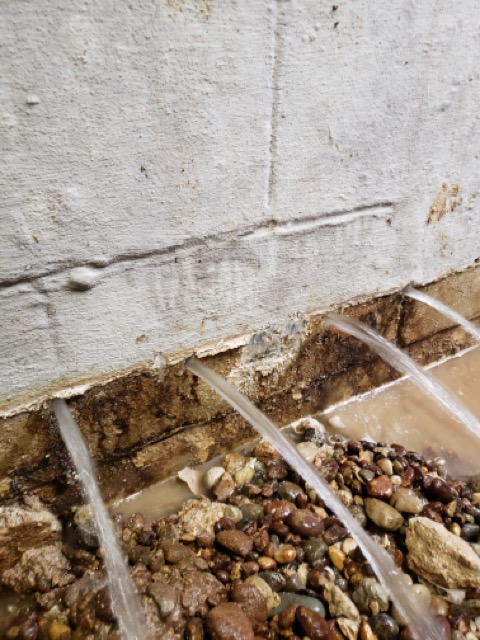
Water issues are very complex. There isn’t a “one size fits all” system that solves all water problems. Water can come from below or above your house. Sometimes there is only a corner of your house that gets wet because that part of the foundation sealant didn’t last as long. Some issues can be solved from the outside and can save you a ton of money. Flexibility is a staple in how we approach every home. In order to offer flexibility we must be honest in the severity, cause, and future ramifications. We offer multiple options for every home to the homeowner and let them decide what is best.
